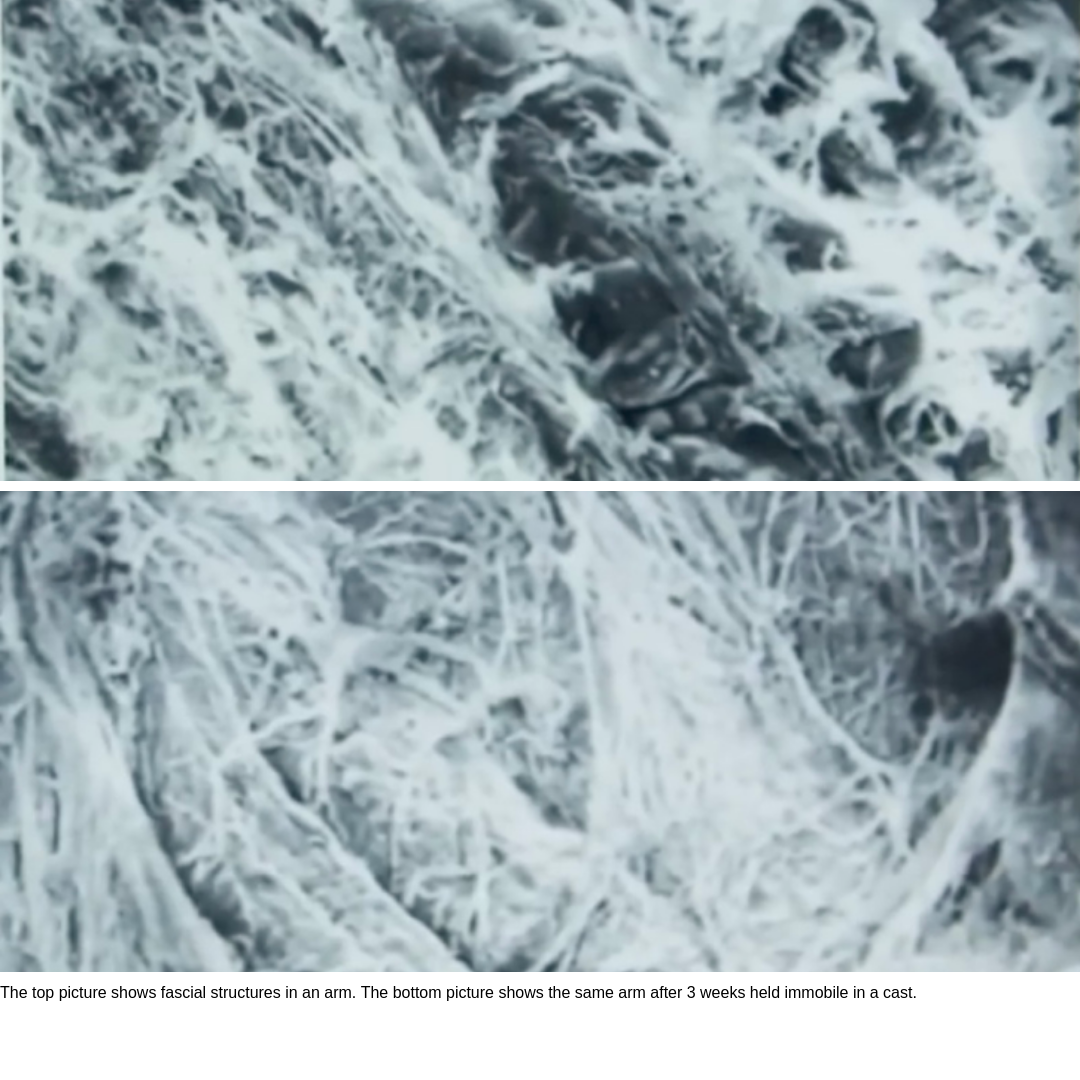
At Delos Therapy, my days in the clinic are filled with patients taking control of their health to reverse their chronic pain and its negative effects. Whether they affect athletes, working professionals or grandparents, unexpected injuries can quickly sideline the momentum towards people’s goals. Injury is multi-dimensional, often leaving patients confused about the healing process and searching for the best way to navigate treatment. Soft tissues play an important role in healing from any injury or surgery. We find that the same mechanisms that produce muscle stiffness are also responsible for repairing injuries. With this understanding, we can treat soft tissue pain and dysfunction and shape treatment to effectively aid in post-injury recovery.
Mechanisms of Muscle Stiffness
As our bodies go through normal wear and tear, cells continuously build and replace worn out fascia, or connective tissue, with collagen. Over time, as collagen accumulates, it may eventually overload the fascial net, which in turn hardens and encapsulates muscles to make them immobile and dysfunctional. Also, overloaded and hardened fascia can create pockets of stagnation, inhibiting the muscle from flushing waste metabolites, aggravating the nervous system, and increasing inflammation. The consequences of dysfunction in the connective tissue span from constant stiffness and elongated recovery time, to limited movement and chronic pain.
Opportunity for Injury
When left alone, hardened fascia often causes pain, reduces muscle pliability, and increases the risk of injury. Hardened, fibrotic fascia is problematic because it is brittle and holds the muscle in a static, shortened state. This tissue quality allows an opportunity for injury by way of over-extension, tears, or skeletal misalignment produced from the constant force of a short, taught muscle pulling on its attachment. In short, tight muscles are more likely to get injured.
Fascia After Injury
I have often seen patients who have “recovered” from ankle sprains or shoulder surgery and sought treatment at Delos Therapy to improve range of motion, pain or weakness problems that developed during their healing process. Sometimes, the very ways that your body heals an injury can actually inhibit movement, the flow of nutrients, and cause lasting pain in the muscles.
The mechanical process of fascial building continues more aggressively while the body is in healing from any trauma or drastic change to the tissue. Beginning approximately 3 days after an incident, fibroblasts respond to the area to quickly rebuild the connective tissue. As a result, the rebuilding process also compounds fibrosis and inhibits the flow of nutrients, blood and lymph. In an effort to repair the tissue, this collagen-building process diminishes muscle pliability as the injury site heals into a new chronic holding pattern. Consider that reparative collagen laid on top of any pre-injury dysfunction further compounds any old, solidified fibrosis, and regardless of new or old dysfunction, collagen build-up puts one at risk for injury.
Solution: Restored Pliability
By applying consistent, precise, and multi-directional pressure into dense and fibrotic tissues, we can break apart old, overloading collagen bonds, restore pliability to the fascia, and enable nutrients to effectively reach healing tissue.
Restoring pliability frees up fascia to spring and effectively transmit force between muscle fibers and muscle groups. Doing so restores function and health to an injured site while simultaneously working back through any pre-injury dysfunction. Additionally, functional movement is necessary to keep the healthy fascia springy and well-ordered.
Coupling Delos Therapy with a functional movement practice allows one to build back well-rounded strength, maintain healthy tissue, and be protected against future injury. Focusing on therapy as a part of not only recovery but long-term maintenance can prevent future injuries and shorten your recovery.
- Nutrition & Muscular Health: The Missing Link in Absorption, Part II - September 17, 2020
- Nutrition & Muscular Health: The Missing Link in Absorption, Part I - September 10, 2020
- An Anti-Inflammatory Diet for Muscular Health - July 7, 2020


